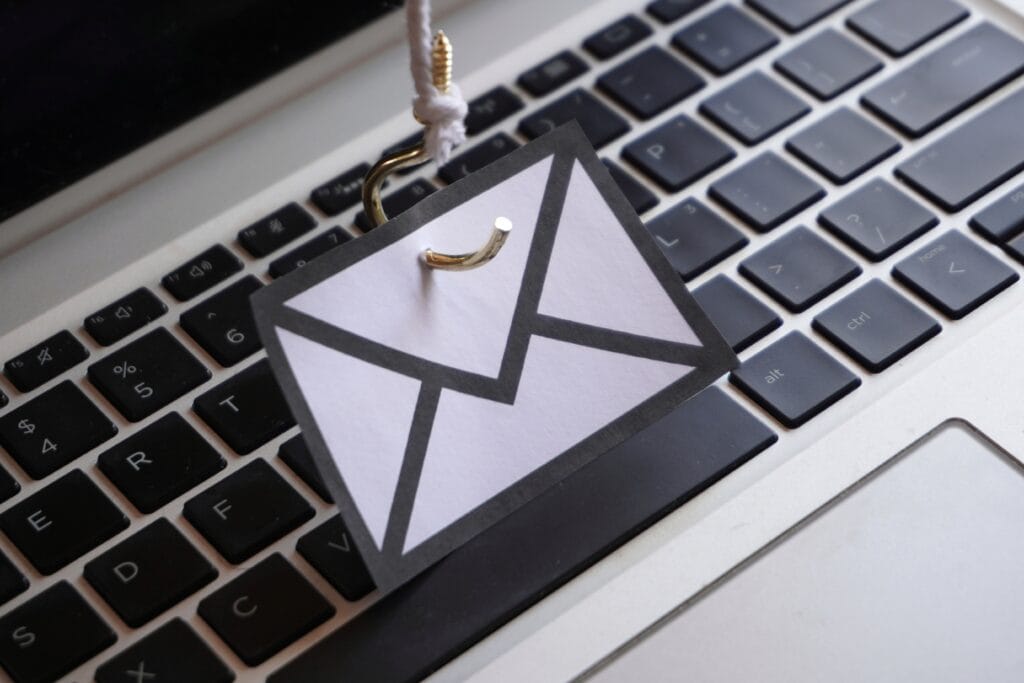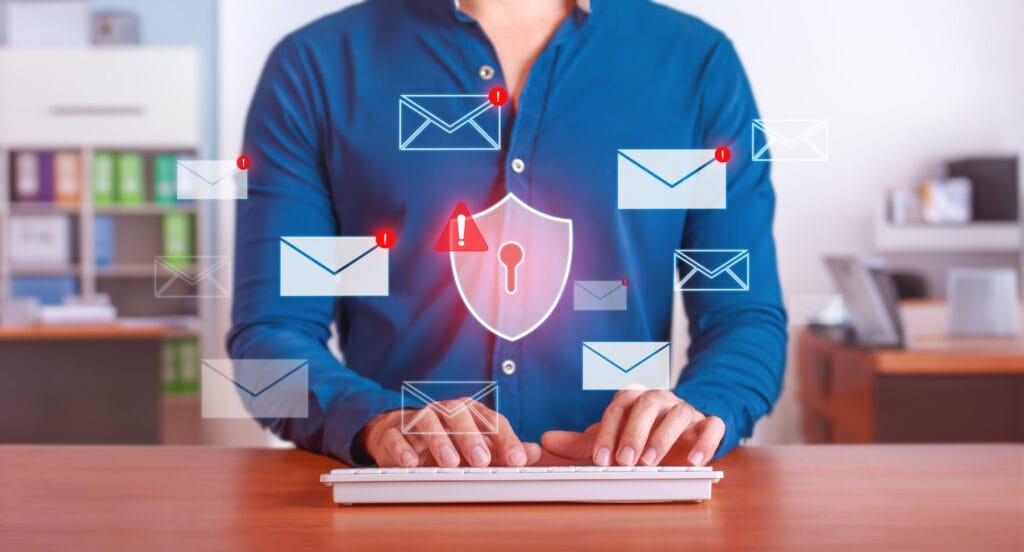The Most Used Tool in Your Business Is Also the Most Targeted
Email is the backbone of modern business. It’s how we communicate with clients, send invoices, authorise payments, and share sensitive data.
But it’s also one of the easiest ways for cybercriminals to break in.
And the reality is: most small businesses aren’t protecting their email properly.


What’s at Stake?
- Phishing attacks that trick staff into handing over passwords or paying fake invoices
- Business Email Compromise (BEC) where attackers impersonate you or your team
- Spam & malware that clogs inboxes and puts your network at risk
- Reputation damage if your domain is used to send spam or scams
💡 Whether you’re a solopreneur or running a 30-person business—email is the front door to your business, and it needs a lock.
What Good Email Security Looks Like (And Why It Matters)
✅ 1. Phishing & Malware Protection
Modern email threats aren’t just “Nigerian prince” spam. They’re:
- Fake invoices from real-looking domains
- Log-in pages that mimic Microsoft 365
- Payroll redirection scams that cost businesses thousands
Your email solution should include:
- AI-powered threat detection (not just basic spam filters)
- Attachment & link scanning
- User training or simulated phishing tests
✅ 2. Email Authentication: SPF, DKIM & DMARC
These are the “behind-the-scenes” protocols that prove your emails are legit—and stop hackers from sending emails pretending to be you.
- SPF (Sender Policy Framework) tells the internet who’s allowed to send email from your domain
- DKIM (DomainKeys Identified Mail) adds a digital signature to verify the sender
- DMARC (Domain-based Message Authentication Reporting and Conformance) sets rules for handling emails that fail checks—and lets you see who’s abusing your domain
📥 Without these set up correctly, your emails are more likely to be marked as spam—or worse, your domain could be spoofed.
✅ 3. Business-Class Email (Not Personal Accounts)
If you’re using @gmail.com or @outlook.com for your business, you’re missing out on:
- Advanced admin controls
- Security policies (like forced 2FA)
- Centralised backups & compliance tools
Microsoft 365 or similar platforms offer true business-grade protection—and when managed properly, they’re far more secure than DIY setups.
✅ 4. Backups, Archiving & Business Continuity
Even with security in place, mistakes happen. That’s why:
- Your email should be backed up outside of Microsoft 365 or Google Workspace
- Archived messages should be searchable for compliance & legal access
- Disaster recovery plans should include email continuity
If your emails went down for a day, what would the cost be?
The Business Outcome: Trust, Continuity & Control
Investing in email security doesn’t just “keep the bad stuff out.” It helps:
- Minimise downtime when the unexpected happens
- Protect your reputation
- Avoid financial loss from phishing and fraud
- Keep your business compliant with GDPR and industry regulations

Ready to Secure Your Inbox (and Your Business)?
At Hilt Digital, we help businesses across the North West secure their inboxes from modern threats—while giving them visibility and peace of mind.
🔐 From phishing protection to full DMARC deployment—we’ve got you covered.
📩 Want to know if your email setup is secure? Contact us today
At Hilt Digital, we deliver advanced email security solutions for small and mid-sized businesses across Wirral, Liverpool, Chester, and the wider North West. Whether you’re in finance, recruitment, education, healthcare, legal services or eCommerce, we secure every layer—from Microsoft 365 and Google Workspace to SPF, DKIM, and DMARC compliance. Our team helps protect against phishing attacks, email spoofing, domain impersonation, and data loss, with secure backups, policy enforcement, and proactive monitoring. As a Cyber Essentials-certified provider, we work with businesses who need trusted, proactive IT and cybersecurity services—not just basic email support. If you need secure email that just works, we’ve got you covered.